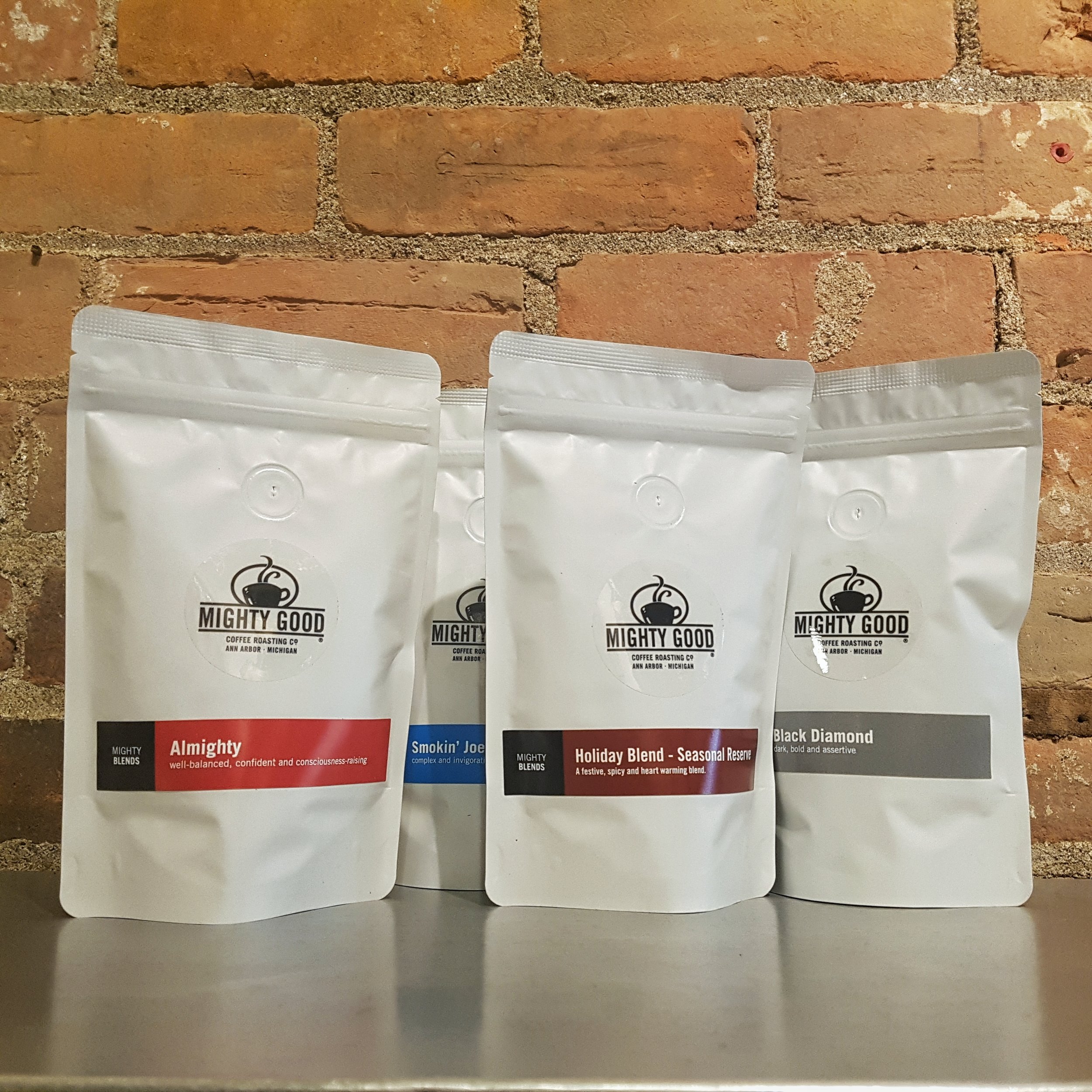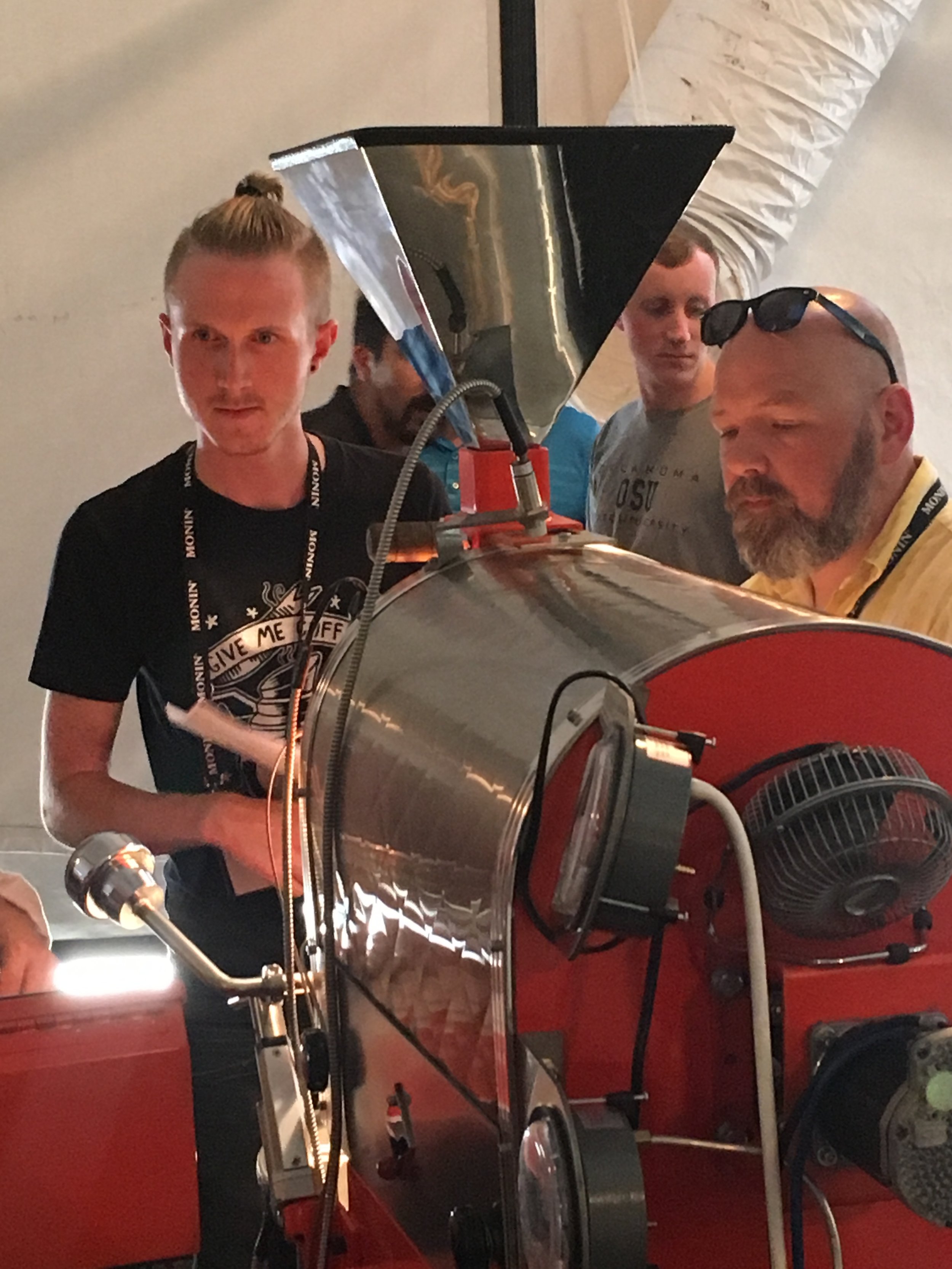Have you ever wondered how coffee goes from ripe cherries waiting to be picked to those little brown beans that we bag up and send home with you? There’s the roasting process, of course, but the beans still have to get from the trees to our roastery—and that means removing the cherry from around the bean and drying it until it’s ready for export.
There are three main processing methods—washed, natural, and honey or pulp natural—as well as myriad localized variations. You might have seen these terms on our menu—for example, we have two Black Label coffees from Ethiopia right now, one a washed Chelelektu and the other a natural Worka. Occasionally we have a honey processed offering (check out our new Brazil Fazenda Sertaozinho), and our Sumatra Suku Batak is a giling basah or semi-washed, but in general our coffees are either washed or natural processed.
(To confuse things further, over the years the terms and methods have become intermingled, with variants on honey process (black honey, red honey and yellow honey) becoming common, as well as other terms such as “wet-hulled”, “semi dry” and “sun dried”.)
In order to hopefully clear things up, here’s a (very simplified) rundown on the three main methods, as well as some lesser-known techniques.
Washed
This method is especially popular in Central America, where water is plentiful and easily available. It involves soaking the beans to soften and remove the cherry—the fermentation stage—and then washing them in water to remove any remaining mucilage (the fruit of the cherry). Some farmers use a depulper to mechanically remove the cherry. The beans are then dried on patios in the sun or in mechanical driers before being prepped for export.
Washed coffees tend to exhibit characteristics reminiscent of their particular terroir: soil, temperature and altitude will all affect the final taste. You’ll tend to find cleaner, lighter tasting notes—citrus, tea, subtle chocolate—compared with a natural coffee. Our Guatemala Huehuetenango is a perfect example of a washed coffee: a clean, balanced cup, notes of dark honey and cinnamon with a subtle brightness.
Natural
Natural process is a simple and cost-effective technique, and is probably the oldest method of coffee processing. It is also, by its nature, the most environmentally friendly. It involves drying the bean inside the coffee cherry, either on a patio (turning every so often to ensure uniform drying), or in a mechanical drier. The dried cherry is then removed from the bean using a hulling machine.
Because the cherry is dried around the bean, natural process coffees tend towards the earthy, fruity flavor profiles. For example, the main reason our Ethiopia Sidamo tastes like a blueberry muffin is because of this natural process. Another natural, our Ethiopia Yirgacheffe Worka Fair Trade Organic, shows off the versatility of this method, with notes of strawberry and candied orange peel to add to a deliciously earthy complexity.
You’ll find mellower, full-bodied coffees using this method, but there is still a lot of room for nuance. In fact, natural's growing popularity has led some farmers in countries more famous for their washed coffees (Guatemala and El Salvador for example) to experiment with the natural process. In essence, this pragmatic approach helps them expand their offerings while at the same time lending an advantage in the increasingly competitive specialty coffee market.
Honey / Pulped Natural / Semi-washed (Giling Basah)
This can simply be described as a cross between washed and natural process. Of course the reality is more complex, but then everything in coffee farming is complex. Honey process (so called because the resulting brew is said to taste like honey) is achieved by de-pulping the coffee cherries soon after harvesting, then drying the beans with the remaining mucilage still attached. This tends to impart some of the depth and fruitiness of the natural process, but with the brightness and nuance of a washed.
The terminology used to describe these methods, which can vary from region to region and even farm to farm, leaves a lot of room for confusion. The process itself—based on the amount of cherry removed, drying time and how much water is involved—also varies based on tradition, preference or just available machinery. Pulped natural and Semi-washed are different terms for essentially the same processing method, but with varying amounts of the cherry removed before drying.
As for our coffees, just this week, we took delivery of a pulped natural Brazil Fazenda Sertaozinho, which is in the process of being tested and tasted before it goes out to our cafes. We are very excited for this particular coffee.
Our Sumatra Suku Batak is another good example of (one version of) the process, called giling basah in Indonesia: bold, earthy and spicy with a heavy body and syrupy mouthfeel.
This is a very basic introduction to coffee processing, and as with everything else in the coffee industry there is a lot more to learn. At the very least, we hope this little guide will give you more of an insight into why the coffee you’re drinking tastes the way it does.



















































